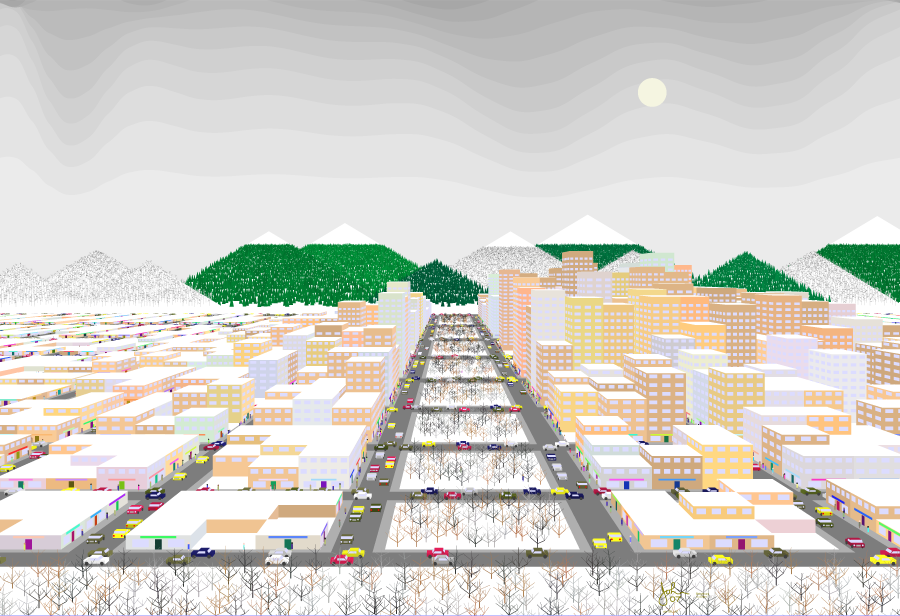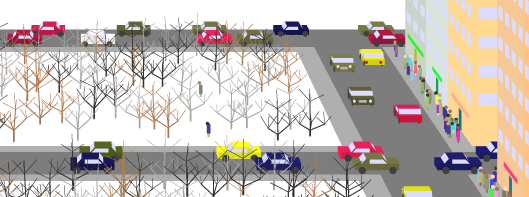
For the artist's description and comments, scroll down.

The image below shows what this looks like without shrinking the image. The printed version shows this level of detal. Note the pedestrians.

A series of images show the mythical city of Beigeburg USA. This genre could be called the "cityscape" and has often been done by various artists. It is called Beigeburg here because, well, this is the "turn of the century" period of the 20th-21st centuries and beige is everywhere.
Beigeburg is completely regular; an overwhelming example of precise City Planning carried out with truly Prussian thoroughness. All of the buildings are constructed in starkly functional Bauhaus style. The colors come with three central tones and variations about them, all of them being what decorators of our enlightened age would call "neutral" colors. The neat-freak tidiness of Beigeburg is implemented with mathematically precise one-vanishing-point perspective.
The most colorful part of many large cities is the street traffic. Close study of Beigeburg reveals that the streets have crowds of pedestrians and swarming autos, all much more colorful than the bland architecture. The tiny pedestrians are visible ("resolved") all the way to the end of the city in the finished print. Small though they are, they provide the color and irregularity that is otherwise lacking. You can think of the people in the cars and on the streets as people you know -- headed off for shopping, work, trysts, etc. Some might detect a note of visual satire here but the artist disavows any such thing.
To add interest, our city is seen against a mountain backdrop. It could be Denver seen from the east, or Salt Lake City from the west. The mountains are perfect Fujiyama cones, with a single precisely-defined snow line. The trees on each mountain have a single central color tone, with variations about that hue. Thus each mountain can be discerned by the eye as a different feature. A given mountain is covered by either aspen-like deciduous trees of spruce-like green trees, sylized as triangles. "Real mountains aren't like that" the purist may object; to which the artist responds "This is art, not photography" or "If they aren't, they should be."
The Triangle Range and the park are quite colorful and lively, with rich summer green and vibrant autumn gold, providing nature's verdant frame for the insipid blandness of the city. The park cuts across the center of the city, providing relief from the urban sameness. We see the city in all it's moods ... the idylls of summer, glowing dusk, colorful autumn, monochrome winter, the drippiness of a wet spring day.
If you compare the size, position, color, etc. of the mountains from one Beigeburg image to another you see the effect of random numbers in action. Each image has a different set of mountains. Close study shows that the same conclusion holds for the buildings, cars, pedestrians. About the only thing that remains constant from one image to another is the streets.